Chinese Broccoli is a vegetable that can be grown in different ways. It can be grown in water, pots, indoors, or from stem cuttings. In this article, we will discuss the history and origin of Chinese broccoli farming, the varieties of Chinese Broccoli, the climate and soil requirements, the propagation methods, the planting and transplanting techniques.
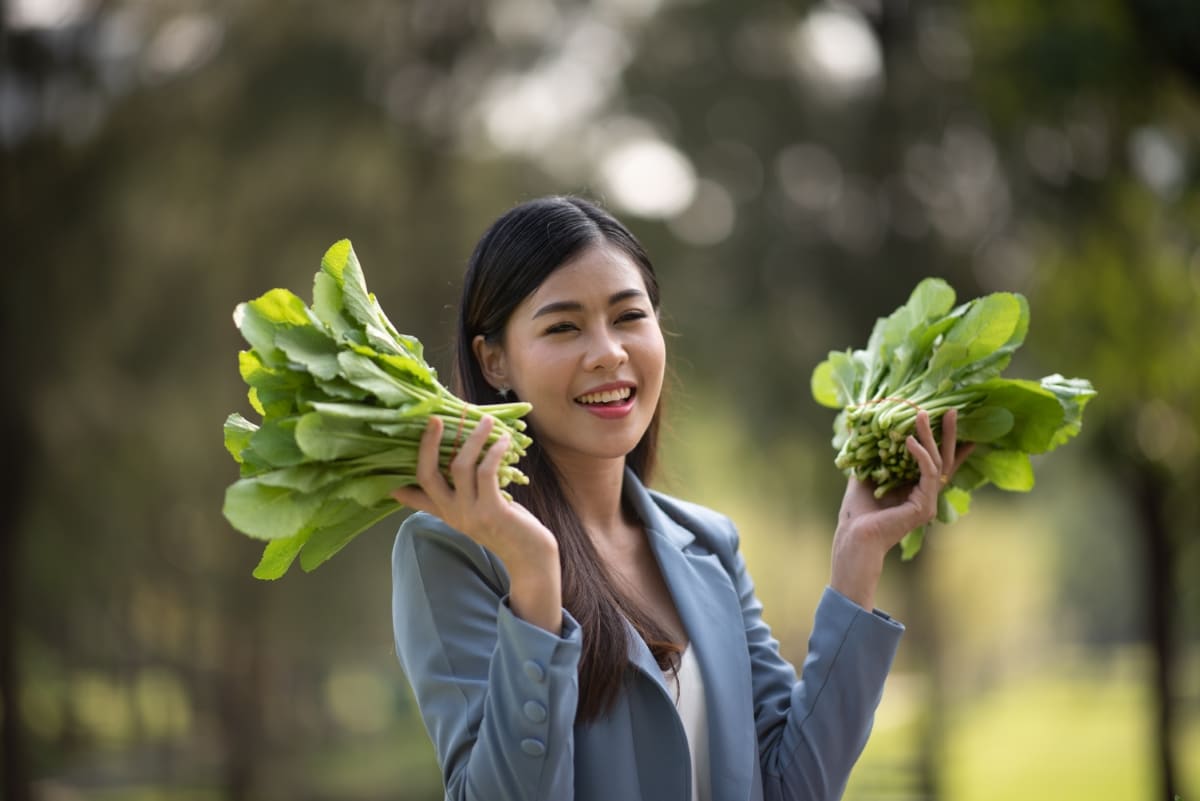
We’ll also provide information related to the companion plants, the pest and disease control measures, the irrigation and fertilization practices, the harvesting and post-harvest handling methods, the yield of Chinese Broccoli, and how to grow Chinese Broccoli in water, pots, indoors, or from stem cuttings.
Chinese Broccoli Farming
Overview of Chinese Broccoli Farming (Kailan)
Chinese Broccoli, also known as Kailan, gai lan, or Chinese kale, is a leafy vegetable that belongs to the Brassica oleracea species. It has thick stems, dark green leaves, and small white or yellow flowers that are edible. Chinese Broccoli is a popular leafy vegetable in Asian cuisines, especially in Chinese, Thai, and Vietnamese dishes. It has a bitter and sweet taste and a crunchy texture. Chinese Broccoli is rich in vitamin C, vitamin K, calcium, iron, and antioxidants. It can be eaten raw, cooked, stir-fried, steamed, boiled, or sautéed.
Chinese Broccoli is a cool-season crop that grows well in temperate and subtropical regions. It can be grown year-round in areas with mild winters and summers. It prefers moist, fertile, well-drained soil with a pH of 6.0 to 7.0. It can tolerate light shade and needs at least six hours of sunlight per day for optimal growth. Chinese Broccoli is a fast-growing vegetable that can be harvested in 45 to 60 days after sowing. It can be harvested multiple times by cutting the main stem and leaving some leaves for regrowth.
History and Origin of Chinese Broccoli Farming
Chinese Broccoli is similar to Broccoli in appearance and flavor but has a slightly bitter taste. It has a thick central stalk, glossy blue-green leaves, and small florets that emerge from the center. All parts of the plant are edible and nutritious, rich in vitamins A, C, and K, and minerals like potassium, calcium, and magnesium.
In case you missed it: How to Start Romanesco Broccoli Farming: A Step-by-Step Growing Guide
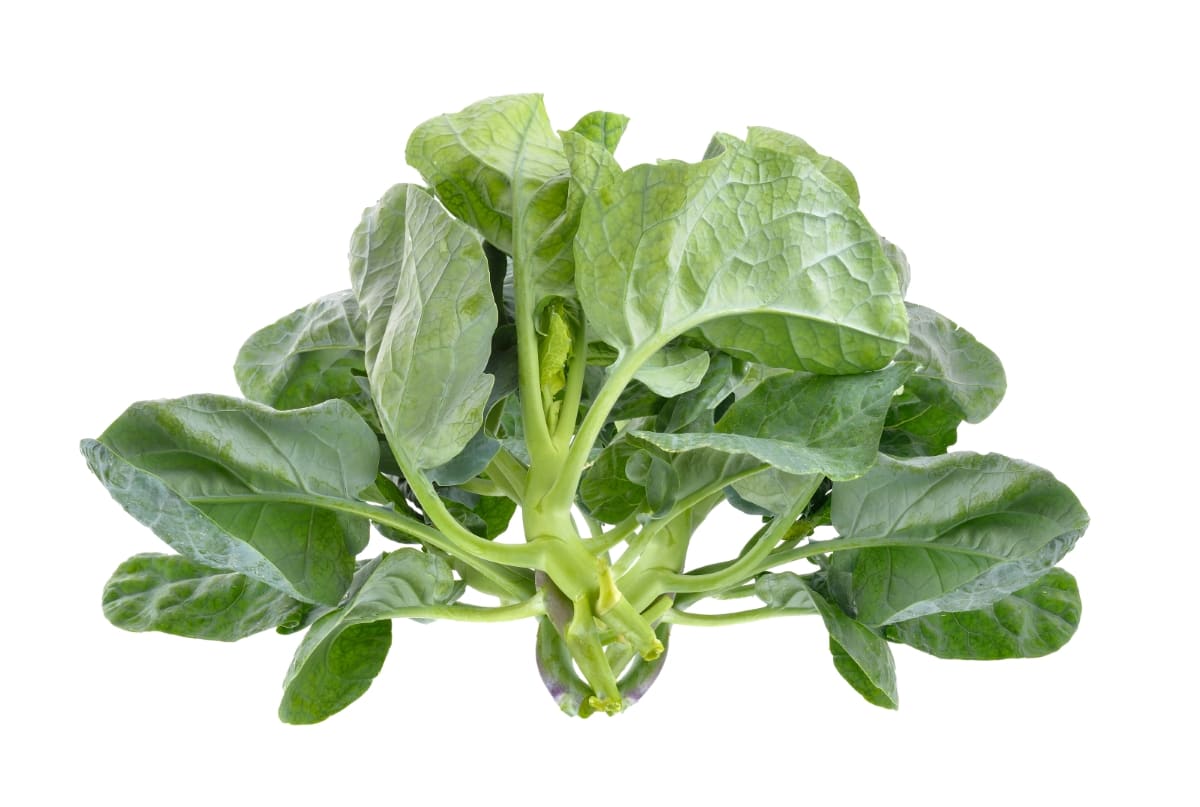
Chinese Broccoli is one of the most commonly consumed vegetables across China and Southeast Asia. It has been cultivated for thousands of years, dating back to ancient times. It is believed that it was developed from cole crops brought to Asia by Portuguese explorers, who selected plants with larger leaves and fewer flowers. It is now widely available at markets around the world, though it is less common than regular Broccoli in the US.
Varieties of Chinese Broccoli
- Green Lance: This variety has dark green leaves and stems and produces small white flowers. It is fast-growing and heat-tolerant, making it ideal for summer planting.
- White Flower: This variety has light green leaves and stems and produces large white flowers. It is slow-bolting and cold-tolerant, making it ideal for winter planting.
- Purple Stem: This variety has purple stems and green leaves and produces purple flowers. It has a mild flavor and tender texture, making it ideal for salads and stir-fries.
- Kichi: This variety has thin stems and small leaves and produces yellow flowers. It has a sweet flavor and crisp texture, making it ideal for soups and braises.
Climate and Soil Requirements
Chinese Broccoli prefers a cool climate with moderate temperatures between 60°F and 75°F. It can tolerate light frosts but not extreme heat or cold. It grows best in full sun, but can also tolerate partial shade. Chinese Broccoli requires rich, moist, well-drained soil with a pH between 6.0 and 7.0. It benefits from adding organic matter, like compost or manure, to improve soil fertility and water retention. It also needs regular fertilization with a balanced fertilizer such as 10-10-10.
Propagation of Chinese Broccoli
Chinese broccoli can be propagated from seeds or stem cuttings. Direct sowing in the garden is possible, or sowing in containers or planters indoors. Each row of seeds should be spaced 18 to 24 inches apart and planted at a depth of 1/4 inch. Seeds ought to germinate within seven to ten days, contingent upon the hydration and temperature of the soil.
In case you missed it: How to Start Broccoli Farming in USA: A Step-by-Step Guide to Planting to Harvesting
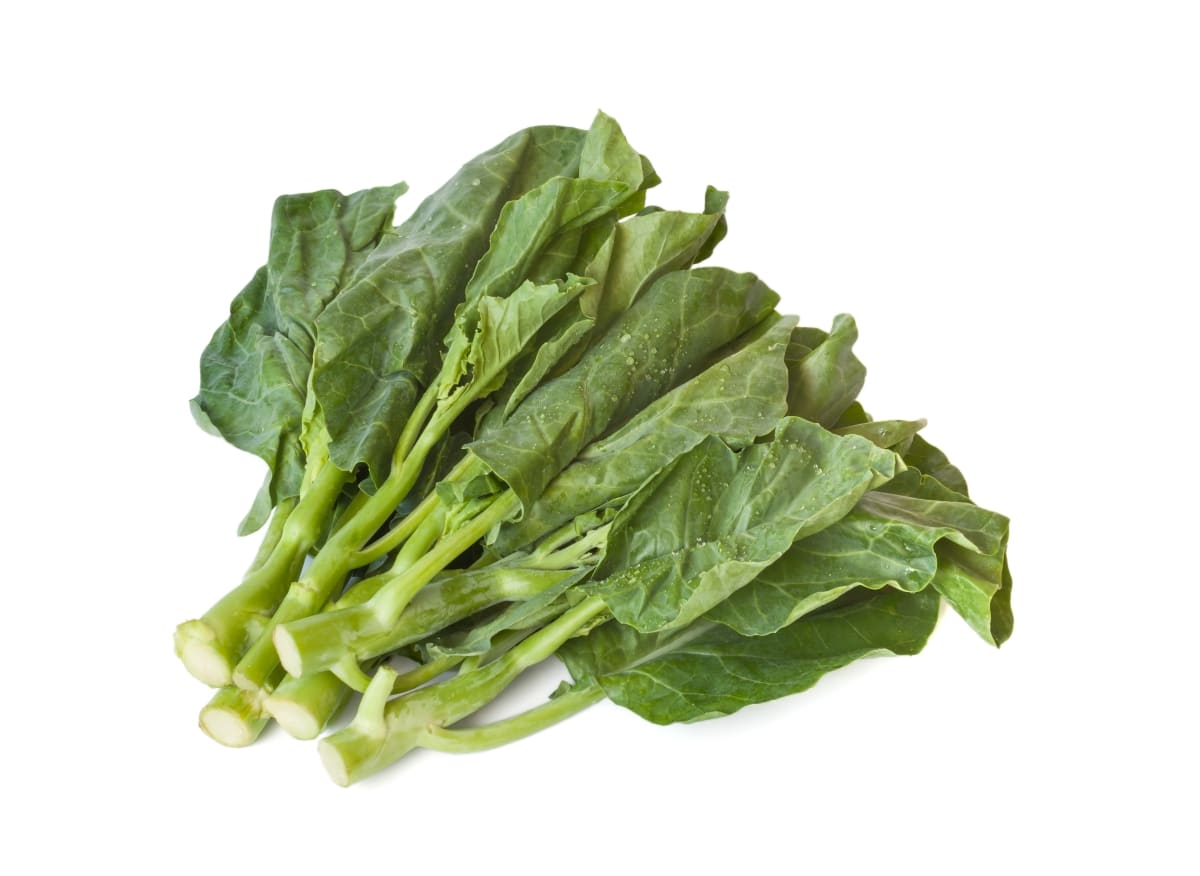
It is possible to obtain stem cuttings from robust plants that have yet to produce flowers. The ideal length for cuttings is between four and six inches, accompanied by a minimum of two nodes, which signify the points where leaves converge on the stem. Until roots form, cuttings should be rooted in saturated soil or water.
Seed Selection and Preparation
It is advisable to procure Chinese broccoli seedlings from reputable sources that guarantee superior quality and efficient germination rates. Until ready to use, seeds should be stored in a cold, dry location away from direct radiation. Before sowing, seeds should be submerged in water for approximately twenty-four hours to accelerate germination. Fungicides may also be applied to seeds in order to inhibit damping off and other pathogens.
Planting and Transplanting
Chinese broccoli may be sown during the spring or autumn, when the soil is able to be tilled. In milder climates, if the ground does not frost during the winter, it may also be planted. It is recommended to disperse seeds indoors approximately six to eight weeks prior to the last freeze date.
It is recommended to transplant seedlings into the garden at a distance of 4 to 6 inches in rows, once they have developed 3 to 4 true leaves. When planting stem cuttings, they ought to be inserted into the soil to a depth of approximately 2 inches, with a row spacing of 4 to 6 inches.
Chinese Broccoli Companion Plants
Chinese Broccoli can benefit from growing with other plants that have similar or complementary needs or effects. Some of the best companion plants for Chinese Broccoli are
- Beans: Beans can fix nitrogen in the soil, which can benefit Chinese Broccoli’s growth and yield.
- Carrots: Carrots can attract beneficial insects that can prey on pests that may harm Chinese Broccoli.
- Garlic: Garlic can repel aphids, cabbage worms, and other pests that may attack Chinese Broccoli.
- Marigolds: Marigolds can deter nematodes, which are soil-borne parasites that can damage Chinese Broccoli’s roots.
- Mint: Mint can repel flea beetles, which are small insects that can chew holes in Chinese broccoli leaves.
In case you missed it: Top 16 Steps/Ways to Boost Broccoli Yield: How to Increase Production, Size, and Quality
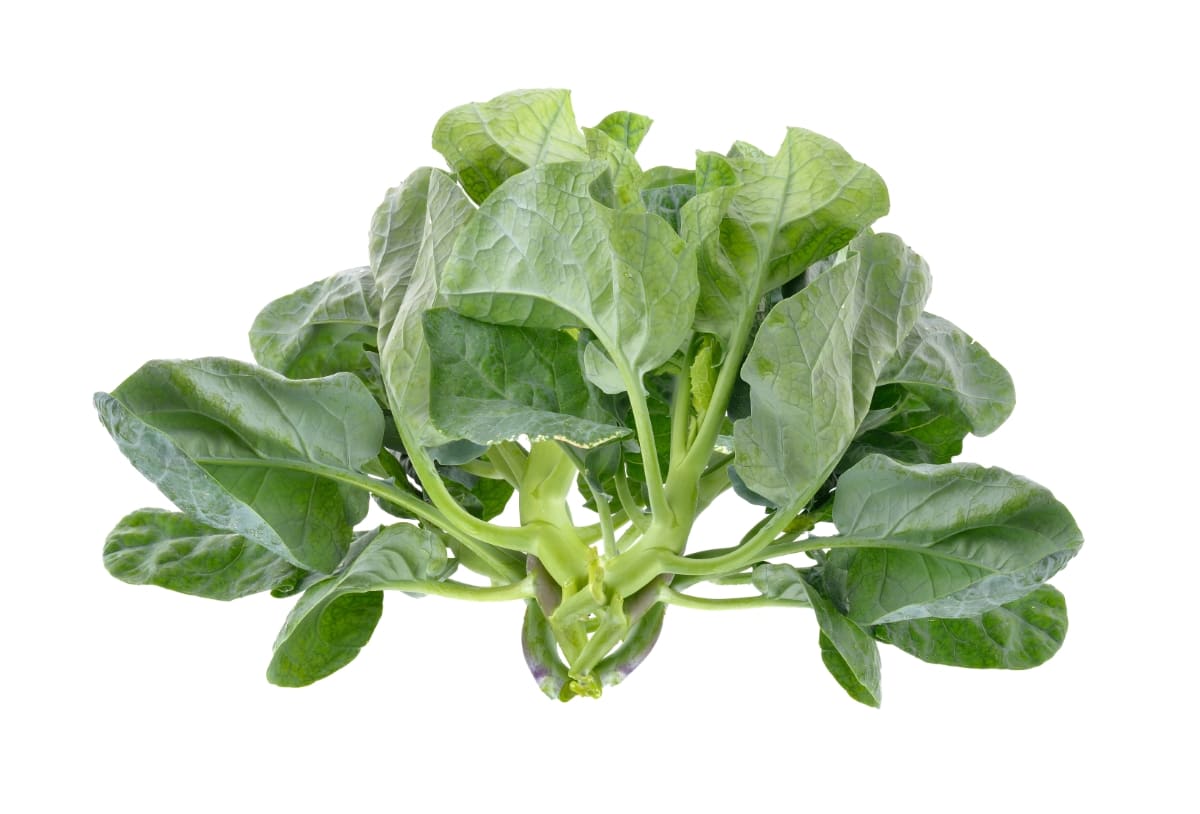
Pest and Disease Control
Aphids: Aphids are diminutive, soft-bodied insects that induce curling, wilting, or yellowing in the leaves and stems of Chinese broccoli by sucking the fluid. Additionally, they are capable of transmitting viruses that can induce atrophy or mosaic patterns. Insecticidal soap, neem oil, pyrethrin, or the release of natural predators like ladybugs or lacewings can be utilized to control aphids.
Cabbage Loopers: Cabbage loopers are green caterpillars feed on Chinese Broccoli leaves, leaving large holes or ragged edges. They can be controlled by hand-picking and destroying them or by spraying with Bacillus thuringiensis (Bt), a natural bacterium that kills caterpillars.
Snails and Slugs: Snails and slugs are slimy mollusks that feed on Chinese Broccoli’s leaves and stems, leaving slimy trails and holes. They can be controlled by trapping them with beer or salt or by sprinkling diatomaceous earth, crushed eggshells, or copper strips around the plants.
Downy Mildew: Downy mildew disease that has grayish-white patches on the undersides of Chinese broccoli leaves and yellow spots on the upper sides. It thrives in humid and wet conditions and can reduce the plant’s vigor and yield. Downy mildew can be controled by avoiding overhead watering, improving air circulation, and removing infected leaves. It can also be treated with fungicides such as copper or sulfur.
Damping Off: Damping off disease that causes seedlings to rot at the base and collapse. It is caused by poor drainage, excessive moisture, or contaminated soil. Damping off can be prevented by using sterile soil or pots, avoiding overwatering, and providing good ventilation. It can also be treated with fungicides such as Mycostop or Captan.
Irrigation and Fertilization
Chinese Broccoli requires consistent irrigation to maintain a moist but not waterlogged soil. Whether or not it requires thorough, even watering once or twice per week is contingent upon the weather and soil conditions. By mulching around the plants, moisture can be retained in the soil and vegetation can be prevented.
In case you missed it: Growing Broccoli in Greenhouse – Planting, Farming
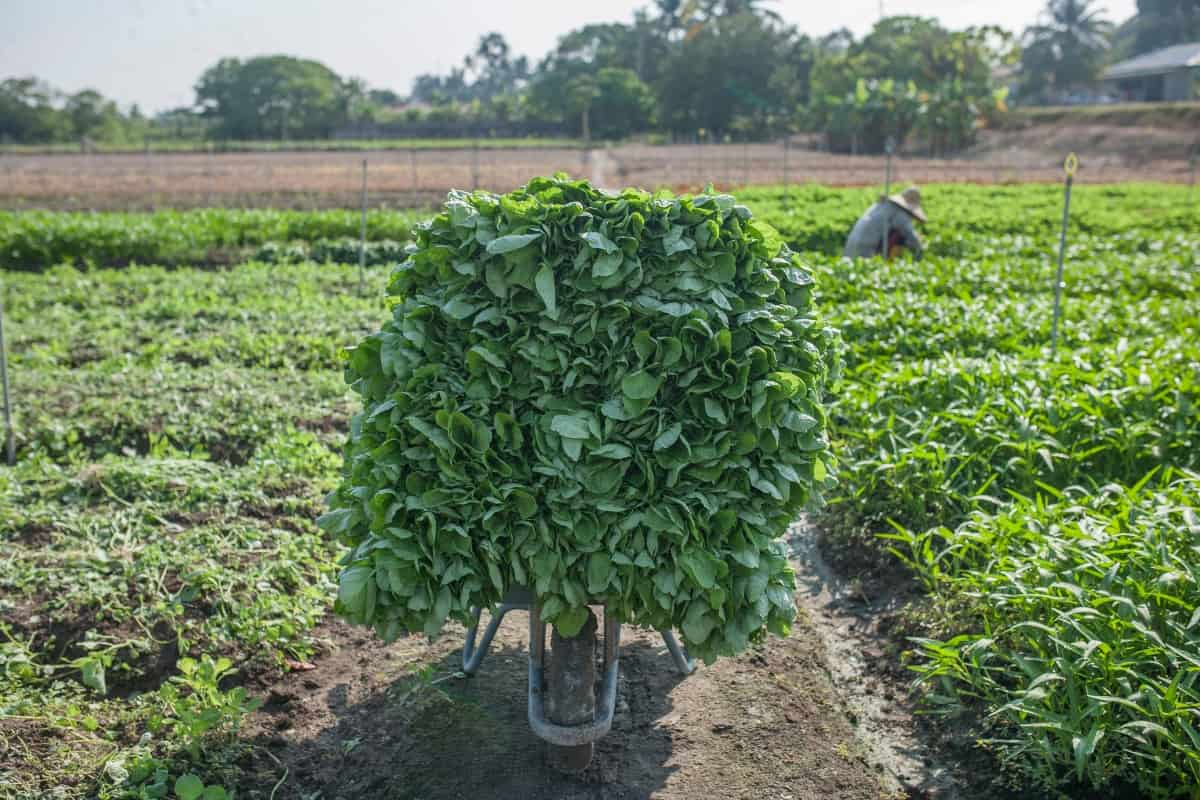
Chinese broccoli requires a moderate amount of fertilizer in order to produce a healthy crop. A balanced fertilizer, such as 10-10-10, should be applied at planting time and again when the plants reach a height of about 6 inches. Adding a side garnish of compost or manure can serve as an additional source of organic matter and nutrients.
Harvesting and Post-harvest Handling
Chinese Broccoli can be harvested when the plants are about 12 to 18 inches tall, usually 60 to 70 days after planting. The entire plant can be cut from base, or individual stems and leaves can be snapped off as needed. The flower buds should be harvested before they open, as they become bitter after flowering. Chinese Broccoli should be washed and dried well before storing. It can be stored in a plastic bag in the refrigerator for up to a week or blanched and frozen for up to six months.
Yield of Chinese Broccoli
Chinese Broccoli can produce about 1 to 2 pounds of edible parts per plant, depending on the variety and growing conditions. A 10-foot row of Chinese Broccoli can yield about 10 to 20 pounds of harvest.
How to Grow Chinese Broccoli in Water
Chinese Broccoli can be grown in water without soil using a hydroponic system, which saves space, water, and fertilizer while preventing pests and diseases. The system requires a container with a lid, a net pot, a growing medium like perlite or vermiculite, a hydroponic nutrient solution, a water pump, an air stone, and a timer.
To set up the system, cut a hole in the lid, fill the net pot with the growing medium, sow seeds or plant stem cuttings, place the net pot in the hole, fill the container with water, add the hydroponic nutrient solution, connect the water pump to an air stone, and set the timer to run the pump for 15 minutes every hour.
How to Grow Chinese Broccoli in Pots
Growing Chinese broccoli in containers is a practical alternative for those who lack the space for a large garden in order to appreciate fresh greenery. Any container with drainage openings and a minimum depth and width of 8 inches may be utilized. Fill the container with a moist, but not waterlogged, potting mix of high quality. The seeds may be sown directly into the container, or seedlings may be transplanted at four to six weeks of age. Allow the plants to be spaced approximately 6 inches apart, and remove any that are overly dense.
In case you missed it: Organic Broccoli Cultivation, and Growing Practices
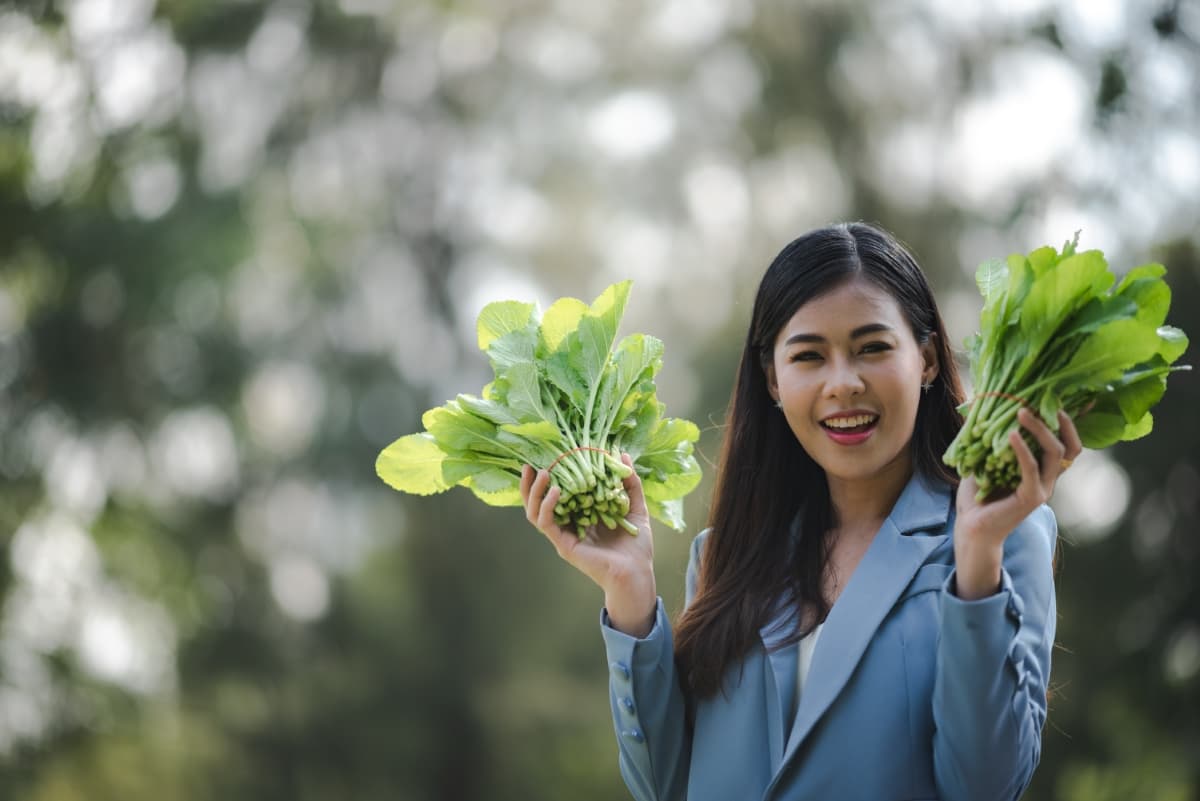
Position the container in an area that receives a minimum of six hours of direct sunlight on a daily basis. Consistently moisten the plants in order to maintain a moist yet not saturated soil. Additionally, organic fertilizer can be applied every two weeks to increase plant growth and yield. The optimal time to harvest the leaves and stems is between 60 and 90 days after sowing, when they are still juvenile and delicate.
How to Grow Chinese Broccoli Indoors
If you merely wish to extend your growing season or do not have access to outdoor space, you may also cultivate Chinese broccoli indoors. A windowsill, a balcony, or a grow light may be utilized to supply sufficient light for the plants. The cultivation process for Chinese broccoli in an indoor environment is similar to that of cultivating it in containers, with the possible exception that temperature and humidity levels may require adjustment.
Chinese Broccoli thrives in an environment with 50 to 70 % relative humidity and a temperature range of 15 to 25 degrees Celsius. One may employ a thermometer and a hygrometer to oversee these parameters and implement necessary modifications. As an illustration, one may employ a fan, humidifier, or misting container to augment atmospheric movement and moisture levels in the vicinity of their plants.
How to Grow Kailan from Stem
It’s fun and easy to make new plants from old ones by growing Kailan from stems. Just use any stem that is healthy and has at least one leaf bud and one leaf left on it. Take off the bottom leaves and cut the stem to about 4 inches long. The cut end need to dipped in rooting hormone powder and then put into a small pot with wet potting mix.
To make a small greenhouse, put a plastic bag or a cover over the pot. Put the pot somewhere bright, but not in full sunlight. Every few days, give the stem a little water, and after two weeks, look for roots. You can take off the cover and move the stem to a bigger pot or your yard once the roots are set.
Conclusion
Chinese Broccoli farming, specifically cultivating Kailan, offers a rewarding experience with its nutritional benefits and culinary versatility. With proper planting, care, and harvesting techniques, you can enjoy a continuous supply of this leafy green. Start your Kailan journey today and reap the delicious rewards of homegrown Chinese Broccoli.
- Types of Pesticides Used in Agriculture: A Beginner’s Guide
- Economical Aquaculture: A Guide to Low-Budget Fish Farming
- 15 Common Planting Errors That Can Doom Your Fruit Trees
- How to Make Houseplants Bushy: Effective Tips and Ideas
- Innovative Strategies for Boosting Coconut Pollination and Yield
- Pollination Strategies for Maximum Pumpkin Yield
- The Complete Guide to Chicken Fattening: Strategies for Maximum Growth
- Natural Solutions for Tulip Problems: 100% Effective Remedies for Leaf and Bulb-Related Issues
- Revolutionizing Citrus Preservation: Towards a Healthier, Greener Future
- Natural Solutions for Peony Leaf and Flower Problems: 100% Effective Remedies
- Maximizing Profits with Avocado Contract Farming in India: A Comprehensive Guide
- Natural Solutions for Hydrangea Problems: 100% Effective Remedies for Leaf and Flowers
- The Ultimate Guide to Choosing the Perfect Foliage Friend: Bringing Life Indoors
- From Sunlight to Sustainability: 15 Ways to Use Solar Technology in Agriculture
- The Ultimate Guide to Dong Tao Chicken: Exploring from History to Raising
- The Eco-Friendly Makeover: How to Convert Your Unused Swimming Pool into a Fish Pond
- Mastering the Art of Delaware Chicken Farming: Essentials for Healthy Backyard Flocks
- 20 Best Homemade Fertilizers for Money Plant: DIY Recipes and Application Methods
- How to Craft a Comprehensive Free-Range Chicken Farming Business Plan
- Brighten Your Flock: Raising Easter Egger Chickens for Beauty and Bounty
- How to Optimize Your Poultry Egg Farm Business Plan with These Strategies
- Subsidy for Spirulina Cultivation: How Indian Government Schemes Encouraging Spirulina Farmers
- Ultimate Guide to Raising Dominique Chickens: Breeding, Feeding, Egg-Production, and Care
- Mastering the Art of Raising Jersey Giant Chickens: Care, Feeding, and More
- Ultimate Guide to Raising Legbar Chickens: Breeding, Farming Practices, Diet, Egg-Production
- How to Raise Welsummer Chickens: A Comprehensive Guide for Beginners
- How to Protect Indoor Plants in Winter: A Comprehensive Guide
- Ultimate Guide to Grow Bag Gardening: Tips, Tricks, and Planting Ideas for Urban Gardeners
- Guide to Lotus Cultivation: How to Propagate, Plant, Grow, Care, Cost, and Profit
- Agriculture Drone Subsidy Scheme: Government Kisan Subsidy, License, and How to Apply Online
- Ultimate Guide to Raising Araucana Chickens: Breed Profile, Farming Economics, Diet, and Care
- Bringing Hydroponics to Classroom: Importance, Benefits of Learning for School Students
- Ultimate Guide to Raising Polish Chickens: Breed Profile, Farming Economics, Diet, and Care
- Ultimate Guide to Raising Australorp Chickens: Profile, Farming Economics, Egg Production, Diet, and Care
- Silkie Chicken Farming: Raising Practices, Varieties, Egg Production, Diet, and Care
- Sussex Chicken Farming: Raising Practices, Varieties, Egg Production, Diet and Care